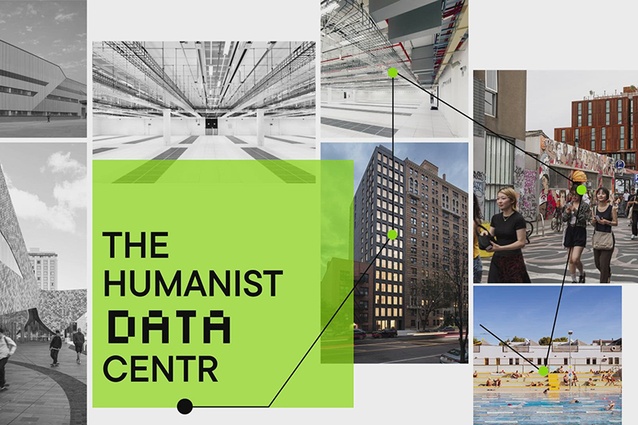The humanist data centre
Driven by near-universal internet access, smartphones and the rapid adoption of AI, humankinds’ reliance on data is growing exponentially. With our work and leisure time increasingly dependent on secure, reliable, and fast data services, global data creation is projected to grow more than 180 zettabytes by 2025. Consequentially, there’s a rising demand for more places to physically house data: data centres.
Data centres consume a significant amount of energy. The amount of power required to operate data centres under construction globally has risen from 2.9 to 7.1 gigawatts (GW) in the past three years — with no signs of slowing down — raising concerns about environmental impact and operating costs and presenting our industry with a challenge.
Combined with the fact that there is only so much available land worldwide, the need to balance the demand for data centres with responsible and available grid power use, creates opportunities for innovation in the built environment industry. Data is now a critical global resource on which the quality of life of the world relies.
This development makes data centres critical infrastructure that must be understood and integrated at a people-centric level to create symbiotic opportunities for our urban environments.
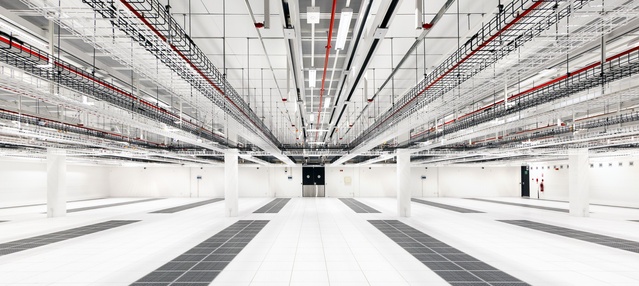
The impact of AI
A major driver of the rising demand for data centres and the power that fuels them is the growth of Artificial Intelligence (AI). With a soaring global adoption of generative AI, the AI boom has led to 72% of organisations implementing AI this year. OpenAI’s ChatGPT has become the fastest-growing consumer application in history, partnering with major players like Apple, Google, Amazon, Tesla, Meta, and Microsoft to enhance web searches, image generation, language processing, social networking, self-driving software, and more for everyday use.
This insatiable demand for AI is putting pressure on the data centre industry to adapt. Currently, there are no large-scale data centres in Australia purpose-built for AI, unlike traditional cloud-based or co-location data centres, which are also experiencing strong market growth. Australia is just beginning to respond by incorporating lessons learned from more established markets abroad. Ultimately, the growing demand for AI will reshape the design of data centres in Australia in a way the local market has yet to experience, marking a permanent shift in their architecture to accommodate AI.
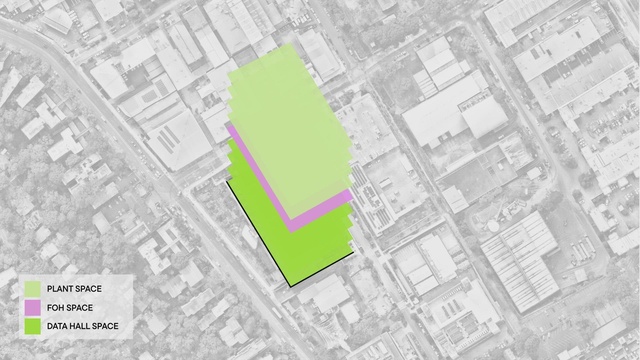
At work
The call to diversify data centres holds significant potential for the commercial sector. Office buildings possess the services infrastructure and connectivity to make the integration of — or conversion to — a data centre feasible.
If data centres are integrated into existing low-yield areas of a commercial building, they can provide landholders with long and stable lease opportunities in an infinitely growing sector while making more efficient use of the power and land already in use on the site — providing an opportunity to make office buildings more useful and profitable.
For example, an office with a large floorplate has potential to house a data centre in its core and revive an underused area with function and revenue. With 257,772 examples of B-grade, deep floorplate, commercial buildings in New York and Los Angeles alone, the insertion of data centres into the workplace presents significant capacity for urban regeneration globally.
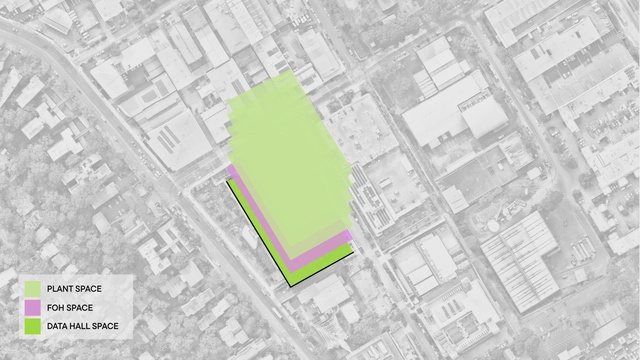
At home
Data centres also have the potential to make a positive impact in the residential sector. By leaning on investment in data centres — a market with an annual growth rate of 7.49 percent — the current affordable housing shortage can look to be more financially viable by pairing with an elevating sector.
As in the commercial space, the possibility of co-locating data centres within apartments and residential precincts poses a solution to the lack of land capacity in the data centre market. As a new neighbour in these urban cores, a data centre will have minimal impact on aspects like traffic and is unlikely to negatively impact the everyday lives of individuals within the community. Due to its location, NSW’s Bradfield City Centre’s Master Plan is an example of a community ripe for this style of integration.
Perhaps the most impactful opportunity to arise from this integration is the potential that lies in the use of heat — a key byproduct of data centres. Excess heat generated by servers can be captured and recycled to provide heat for the local community, heating homes, pools or even used to support hydroponic farming practices. This approach has been successful in several case studies worldwide, including Meta’s Odense Data Centre in Denmark which contributes to heating nearly 7,000 homes as well as Equinix PA10 in Paris which provided the heating for the2024 Olympic training pool in Paris.
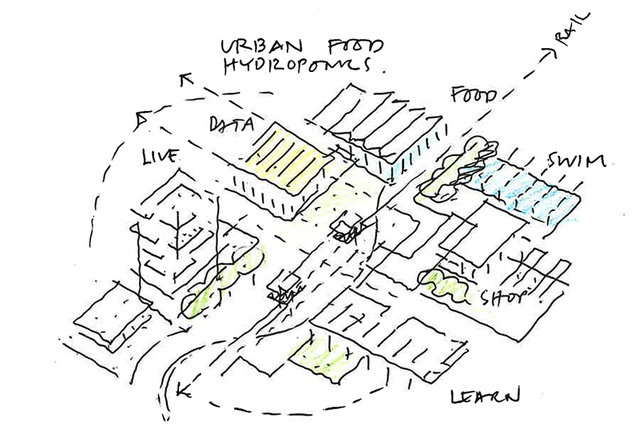
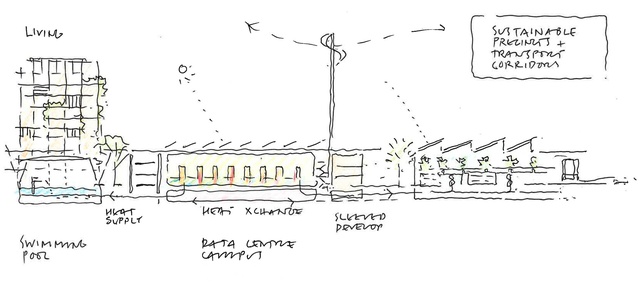
How do we make this happen?
The aforementioned data centre renaissance requires built environment professionals to lead the transformation of data centres into community serving assets. This transformation requires the industry to work together to:
1. Consider integration.
When and where possible, architects and data centre operations should consider the benefits of integrating data centres into other suitable typologies and master planned communities. Although not every kind of data centre can work as part of an office or apartment, we must consider all data centres in the context of how they improve community. Typical mixed-use buildings mesh their competing interests and complement one another, why can’t data centres enter that mix?
2. Reduce energy consumption.
To address the significant amount of energy they consume, data centres must incorporate environmentally positive design principals.
Although there’s currently zero likelihood of a data centre’s roof being covered in solar panels (because its roof space would be occupied by other plant and equipment), the choice to co-locate one within a master planned community of other building typologies with adjacent empty roofs will provide an offset to the huge power draw of data centres from the grid. Such colocation is already underway, with some data centres sharing a site with power generation assets like solar and wind farms, as well as nuclear or hydro power.
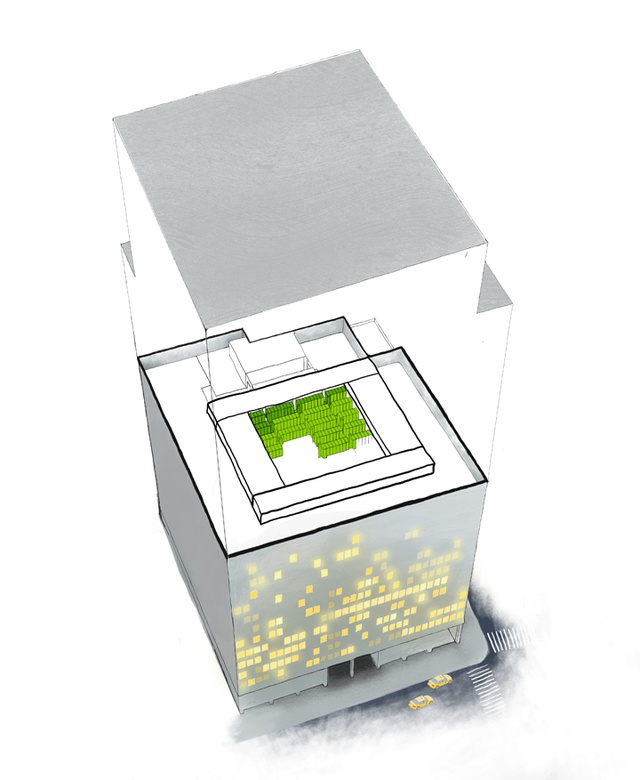
3. Embrace added security.
As with all precious things, data must be protected. As the prevalence of data breaches and nefarious actors intent on stealing sensitive information grows mainstream, data centres provide a haven for safe and secure data to be physically stored away from prying eyes and perverse breaches.
Consequentially, any integrated data centre provides a challenge for ensuring security is maintained. 24/7 security monitoring and physical security deterrents would need to operate and protect the data centre asset, meshing with the wider development as much as possible.
The challenge here is twofold: mindset and integration. The ability for a data centre to be included in a mixed-use development securely requires users to see the benefits of heightened security and for designers to integrate the facilities in ways that reinforce those benefits. To strike this balance, looking to other public buildings that house highly secure areas — like airports — and applying similar design methodologies can ensure the integration of data centres with commercial or residential developments without it having to be separated entirely.
Data centres are essential infrastructure
As a physical expression of the relationship we hold with our data, data centres will move closer to people and social cores in a way that prompts architects to consider the relationship between data centres, communities, and individuals. As a result, tomorrow’s data centres must respond to demands for contextual, human-centric design that adds benefit to its community.
The future of data centre design must be expected to support community via integration, appropriate land use and the incorporation of environmentally positive design principals while serving as an added revenue source for developers and building owners.
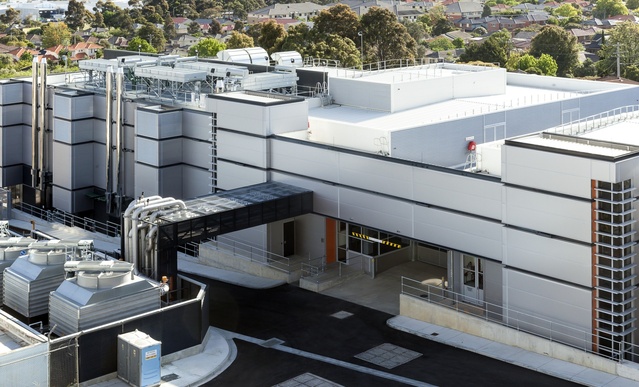
About the author:

Experienced in a unique range of typologies, primarily data centre design, Transport, and Industrial Architecture, Mitch is set apart by his attention to detail and belief in process.
A data centre specialist, Mitch has years of experience with both hyperscale and co-location retail data centre clients, as well as global tech data centre providers. As a leader within the rapidly developing sector, he possesses a comprehensive understanding of the latest technologies, infrastructure requirements, and best practices.
Mitch has led the design, documentation, and stakeholder coordination for multiple data centre projects. Demonstrating extensive typology knowledge, he ensures that designs meet client, budget and regulatory requirements. On top of this experience, Mitch has previously been seconded by a global cloud provider to assist as a client side architectural ‘subject matter expert’ for their APAC data centre lease and development sites through the design and construction phases.

